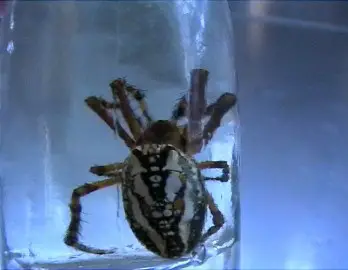PLEASE NOTE THAT AT NO TIME ARE CHILDREN ALLOWED TO HANDLE LIVE SPIDERS AND ARE TAUGHT NOT TO TOUCH ANY SPIDERS, AS ALL CAN BITE. ALL LIVE SPIDERS KEPT IN THE ROOM ARE IN SEALED CONTAINERS AND ARE ONLY FED BY THE TEACHER.
In 2000, the children really got into spider collecting in a big way, despite being constantly warned against collecting them!! We started by discovering that after 4 months, the female redback that we kept in the classroom last year had, in death, left behind two babies that had somehow survived from last year until March with no food and undiscovered until we went to clean out the bottle ready for another spider.
PLEASE NOTE THAT IN THE CLASSROOM THE CONTAINERS ARE SEALED AND NO CHILDREN ARE ALLOWED TO FEED OR TOUCH THE SPIDERS. It’s quite amazing how little air or food, spiders need to survive!!
So we found some food for these baby redbacks, still very small and at present one is still surviving. Not sure if it ate the other one but it’s not in sight at the moment!
The other spider the kids found is the one on the right. We put it in a small aquarium and it happily munched away on grasshoppers we caught for it.
Then I went on 4 weeks long service leave before Easter and the kids really got into the collecting in a big way and unfortunately put several other spiders in with this one, all of which had very short lives!
This was one of the unfortunate ones. At present we have one spider in this tank and we’re not sure if it is the original one or one like it!!
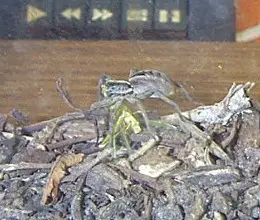
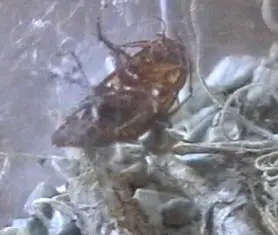
The children found a cockroach which was supposed to be food for this spider during the holidays. It survived the holidays however but not the redback as you can see in the picture below when we finally put it in the redback’s tank. Despite being 10 times its size, overnight the redback captured the cockroach in its web and has been feeding on it all day!!
One of the children found a rather large female red-back at the bus stop as well and brought it to school.
As food has become scarce with the colder weather, I bought a box of small crickets and she was most thrilled to be fed one of them today.
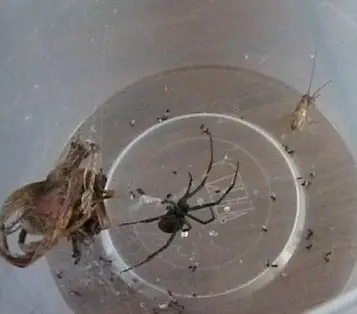
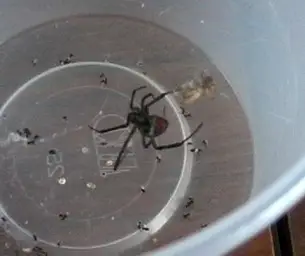
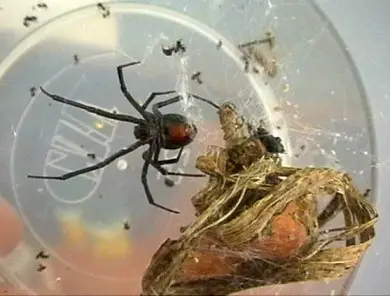
Here’s the red-back leaving her hiding spot behind a dead leaf to come and capture the cricket. She has brought it back to her leaf and is wrapping it up for later. She now has a new home in a small tank too and seems quite happy in there for now.
One of the children also brought some spiders they found at home and called them “white backs”. We’re not sure of their real name so if anyone can identify them for us, it would be great. (I think they are silver orb weavers.)
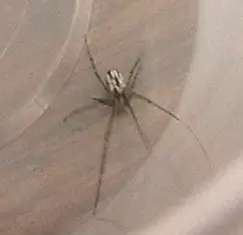
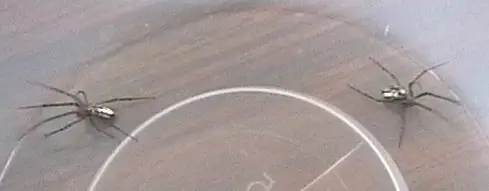
4 June, 2000:
This is our newest spider. One of the children found it in the garden and thought it was a Jeweled Spider. However, we found a book that said it was a Bolas Spider. However we found out after she built a web and the Bolas spider doesn’t, that she is actually an Araneus spider, to which the Bolas is related.
We fed it some bugs which you can see in the picture but it didn’t like them much.
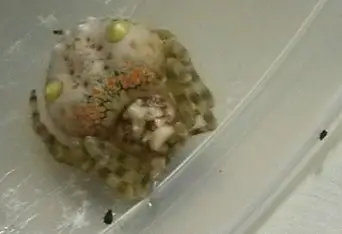
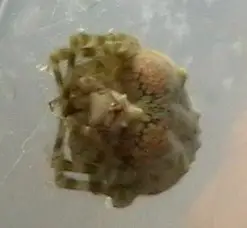
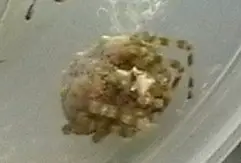
We had been reading about how the Bolas Spider throws a strand of silk with a sticky ball on the end to catch its prey. Our Araneus didn’t like to eat at all in captivity despite feeding her all sorts of nice insects.
As you can see, it is a very weird looking spider with all its bumps. It now has a nice big home in a big fish tank and has actually changed colour to match its surroundings. It is a very clumsy spider and falls on its back when it walks.
It has a very messy sort of web that you can see in the picture below.
Unfortunately, she didn’t survive too much longer, we think she may have been near the end of her life span when we found her. A very interesting spider to study.
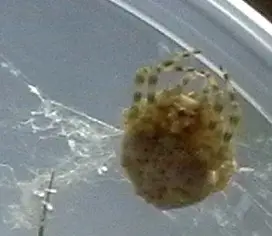
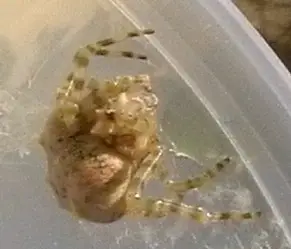

Here’s our spider having a feed today. She really enjoyed this grasshopper the kids found for her. You can see the messy web she makes at the top of the sticks. The grasshopper looks all blurry because she has wrapped it up in silk before she eats it.
The other big events were the laying of egg sacs by by one of our Red-backs and another small brown spider that the kids caught.
The small brown spider has an abdomen a bit like a Red-back but it lays a different shape sac. The pictures below are of her 2nd sac and we have some spiderlings in with her from her first sac.
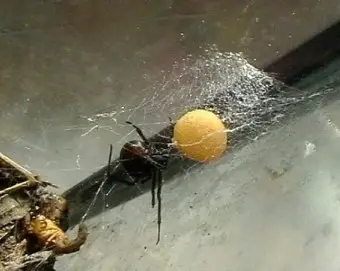
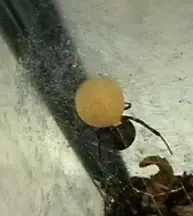
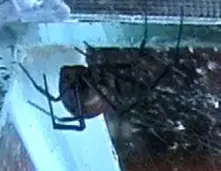
The Red-back’s sac is a perfect sphere and she is guarding it closely. You can see the remains of a grasshopper she had for tea in the bottom of the photos.
The other Red-back is the other baby. She hasn’t laid any egg sacs as she has never mated. The Redback can lay many egg sacs a long while after mating has taken place.
This spider was sent to us by a fellow in Tasmania. It is preserved in a small bottle of methylated spirits, which is how you should keep your spiders if they die and you want to keep them.
Of course it’s best to let them go BEFORE they die!!
